A rib steak and a ribeye are two different cuts of meat, although they come from the same section of the cow. A rib steak typically includes the bone, while a ribeye is a boneless cut.
Both cuts are known for their rich marbling and intense flavor, making them popular choices for steak enthusiasts. Whether you prefer the bone-in experience or the convenience of a boneless cut, both options offer a delectable dining experience that will satisfy any meat lover’s cravings.
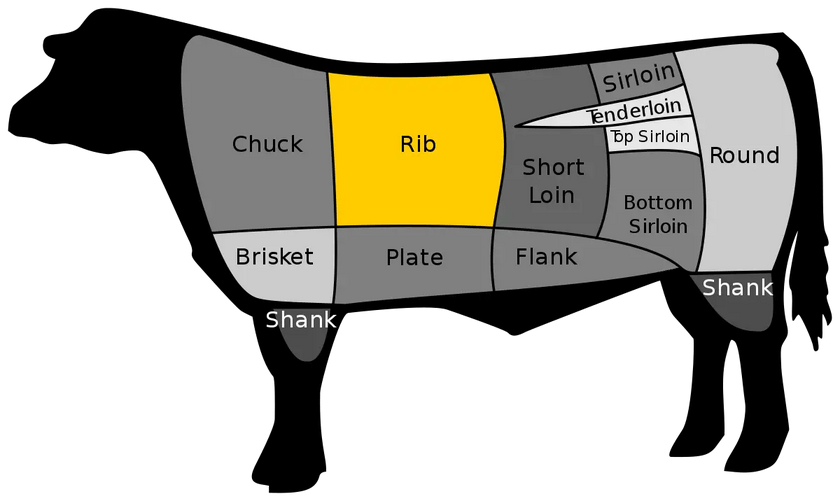
The Difference Between Rib Steak and Ribeye: Explained
When it comes to the world of steaks, there are many cuts to choose from. Two popular options that often get confused are rib steak and ribeye. While they may sound similar, there are actually a few key differences that set them apart.
In this section, we will explore the dissimilarities between rib steak and ribeye, helping you make an informed decision the next time you’re at the butcher or ordering at a restaurant.
1. Cut of Meat
The main distinction between rib steak and ribeye lies in the specific section of the beef that they are taken from. Rib steak is cut from the rib primal section, which is located between the chuck and the loin. This section typically spans ribs 6 to 12, with bone-in cuts being common.
On the other hand, ribeye is a boneless cut that is taken from the same rib primal section but is specifically sourced from the ribeye roll. It is essentially a boneless slice removed from the whole rib roast.
2. Bone-in vs. Boneless
One of the most noticeable differences between rib steak and ribeye is the presence of bones. Rib steak is typically sold with the bone still intact, providing added flavor and moisture during the cooking process. The bone also adds visual appeal to the steak.
In contrast, ribeye is usually sold as a boneless cut, making it easier to handle and cook evenly. Some people prefer bone-in steaks for the enhanced flavor, while others prefer the convenience of boneless cuts.
3. Marbling and Texture
Both rib steak and ribeye are known for their rich marbling, which refers to the fat that is evenly distributed throughout the meat. This marbling contributes to the tenderness, juiciness, and flavor of the steak.
However, due to the specific location of ribeye in the ribeye roll, it tends to have slightly more marbling compared to rib steak. This extra marbling can result in a more tender and flavorful eating experience.
4. Cooking Methods and Versatility
When it comes to cooking, rib steak and ribeye can both be prepared using various methods such as grilling, broiling, or pan-searing. However, due to the bone-in nature of rib steak, it may require a slightly longer cooking time to ensure the meat near the bone is fully cooked.
Ribeye, being boneless, offers more consistent cooking times across the entire cut. Additionally, ribeye is often considered more versatile as it can be easily sliced into thinner cuts for dishes like stir-fries or sandwiches.
5. Price and Availability
Lastly, the price and availability of rib steak and ribeye can vary. Since rib steak includes the bone, it is often more affordable compared to boneless cuts like ribeye.
However, this can also depend on factors such as the grade of meat and the region you are purchasing it from. Additionally, ribeye tends to be more widely available in various cuts, ranging from thick steaks to thinly sliced beef for sandwiches.
Choosing Between Rib Steak and Ribeye: A Guide
When it comes to indulging in a juicy and flavorful cut of beef, the rib section is a popular choice among meat enthusiasts. Within this section, two cuts often leave people undecided: rib steak and ribeye.
Both are known for their tenderness and rich flavor, making it a tough decision for meat lovers. In this guide, we will explore the differences between rib steak and ribeye to help you make an informed choice.
1. The Cut
The key difference between rib steak and ribeye lies in the way they are cut from the rib section of the beef.
Rib steak is a bone-in cut that is sliced from the rib primal of the steer. It typically includes a portion of the rib bone, which enhances the flavor and adds succulence to the meat. The bone also helps retain moisture during cooking, resulting in a tender and juicy steak.
Ribeye, on the other hand, is a boneless cut that is obtained by removing the bone from the rib steak. This results in a larger and more uniform piece of meat, with a characteristic marbling of fat throughout. The marbling contributes to the ribeye’s rich and buttery flavor.
2. Flavor and Texture
The difference in the cut affects the flavor and texture of rib steak and ribeye.
Rib steak, with its bone-in nature, tends to have a slightly more robust flavor. The bone imparts a unique taste to the meat, giving it a rich and savory profile. The presence of the bone also helps to retain moisture, making the steak tender and succulent.
Ribeye, being a boneless cut, offers a more uniform texture and tends to be slightly more tender compared to rib steak. The marbling of fat throughout the meat enhances its flavor and provides a luxurious and buttery mouthfeel. The fat melts during cooking, infusing the meat with a luscious taste.
3. Cooking Methods
Both rib steak and ribeye can be cooked using various methods to suit your preference.
Rib steak is well-suited for grilling, broiling, or pan-searing. The bone helps to insulate the meat and prevents it from drying out during high-heat cooking. This method can result in a beautifully charred exterior with a juicy and tender interior.
Ribeye, due to its higher fat content, is also excellent for grilling or pan-searing. The fat melts during cooking, creating a delicious crust and imparting a rich flavor to the meat. However, it is important to note that ribeye can be prone to flare-ups on the grill due to the higher fat content.
4. Price
The price can be a determining factor when choosing between rib steak and ribeye.
Ribeye is often considered a more premium cut due to its tenderness and marbling. As a result, it tends to be slightly more expensive compared to rib steak. However, the price may vary depending on factors such as the grade of the beef and the location where it is purchased.
Rib steak, being a bone-in cut, is relatively more affordable compared to ribeye. It offers a similar flavor and tenderness at a more budget-friendly price point. This makes it a popular choice for those looking to enjoy a delicious steak without breaking the bank.
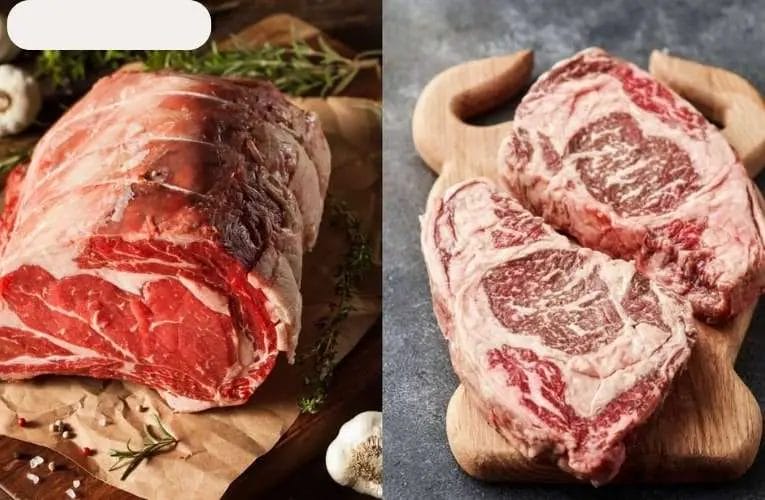
Rib Steak vs Ribeye: How the Cuts Differ
When it comes to steak, there are many different cuts to choose from. Two popular choices are rib steak and ribeye. While these cuts come from the same part of the cow, there are some key differences that set them apart.
In this section, we will explore the differences between rib steak and ribeye, including their texture, flavor, and cooking methods.
1. Rib Steak
Rib steak, also known as bone-in ribeye or prime rib, is a cut of beef that includes a rib bone. This bone gives the steak its signature “T” shape and adds flavor during the cooking process. Rib steak is known for its rich marbling, which makes it tender and flavorful.
When cooked, rib steak has a juicy and bold flavor that is often described as beefy and buttery. It has a slightly chewy texture due to the presence of the bone.
Rib steak is best cooked using dry heat methods such as grilling, broiling, or pan-searing. It is recommended to cook rib steak to medium-rare or medium to preserve its tenderness and flavor.
2. Ribeye
Ribeye, also known as rib eye steak or Delmonico steak, is a boneless cut of beef that is taken from the same section as the rib steak. The main difference between ribeye and rib steak is the absence of the bone. This results in a different cooking experience and texture.
Ribeye is known for its abundant marbling, which gives it a tender and melt-in-your-mouth texture. It has a rich and intense flavor, with a good balance of fat and meat.
Ribeye can be cooked using both dry heat methods such as grilling, broiling, or pan-searing, and moist heat methods such as braising or slow cooking. It is recommended to cook ribeye to medium-rare or medium for the best flavor and texture.
3. Key Differences
While rib steak and ribeye share many similarities, there are a few key differences to consider:
- Rib steak includes the bone, while ribeye is boneless.
- Ribeye has more marbling, making it more tender and flavorful.
- Rib steak has a slightly chewier texture due to the presence of the bone.
- Ribeye can be cooked using both dry and moist heat methods, while rib steak is best suited for dry heat methods.
4. Choosing the Right Cut
When it comes to choosing between rib steak and ribeye, it ultimately comes down to personal preference. If you prefer a steak with a bone and don’t mind a slightly chewier texture, rib steak may be the perfect choice for you.
On the other hand, if you prefer a tender and melt-in-your-mouth texture with abundant marbling, ribeye is the way to go.
Regardless of which cut you choose, both rib steak and ribeye are delicious options that are sure to satisfy any steak lover’s palate. Experiment with different cooking methods and seasonings to enhance the flavor of these cuts and enjoy a mouthwatering steak experience.
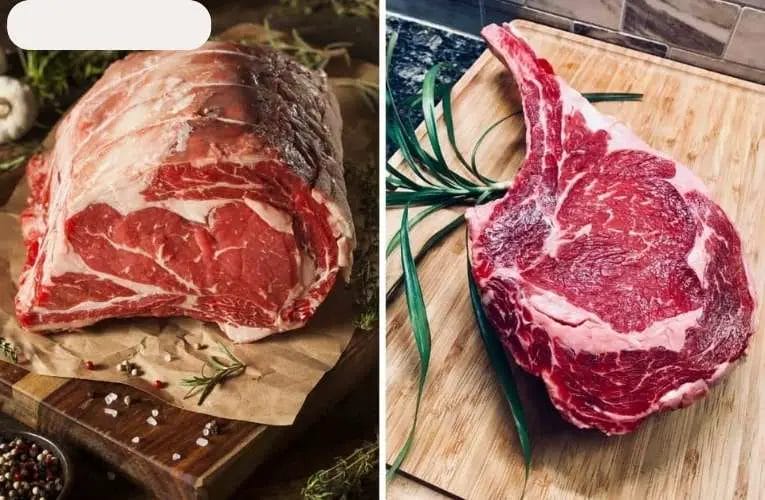
Exploring the Distinctions: Rib Steak vs Ribeye
When it comes to selecting the perfect cut of beef, the rib area offers some of the most succulent and flavorful options. Two popular choices are rib steak and ribeye, both known for their rich marbling and juicy tenderness.
Despite their similarities, there are distinct differences between these cuts that can greatly impact your dining experience. Let’s delve into the unique characteristics of rib steak and ribeye to help you make an informed decision.
Rib Steak
Rib steak, also known as bone-in ribeye or cowboy steak, comes from the rib section of the cow. As the name suggests, rib steak is a steak that still has the bone attached.
This bone not only enhances the presentation but also adds extra flavor to the meat during the cooking process. The generous marbling throughout the steak ensures a melt-in-your-mouth experience, making it a favorite among steak enthusiasts.
When cooked properly, rib steak delivers a perfect balance of tenderness and beefy flavor. The bone acts as an insulator, helping to retain moisture and imparting a unique taste to the meat. The outer layer of fat surrounding the steak adds juiciness and depth of flavor, making each bite a heavenly delight.
Ribeye
Ribeye, on the other hand, refers to a boneless cut from the rib section of the cow. This popular steak is highly regarded for its outstanding marbling, resulting in exceptional tenderness and a buttery taste.
The absence of the bone makes ribeye easier to handle and provides a larger portion of meat compared to rib steak.
Renowned for its intense flavor, the ribeye steak offers a luxurious dining experience. The marbled fat throughout the meat melts during cooking, creating a moist and velvety texture.
The richness of the ribeye makes it a top choice for steak connoisseurs who value the indulgence of a premium cut of beef.
Key Differences
While both rib steak and ribeye share similarities in taste and texture, there are a few notable differences that can influence your preference. Here are the key distinctions:
- 1. Bone: Rib steak contains a bone, which enhances flavor and presentation. Ribeye is boneless, providing a larger portion of meat.
- 2. Cooking Method: Due to the bone, rib steak may require longer cooking times to ensure even heat distribution. Ribeye cooks more evenly and quickly.
- 3. Texture: Rib steak offers a more toothsome texture, while ribeye tends to be more tender and buttery.
- 4. Portion Size: Ribeye generally provides a larger portion of meat compared to rib steak.
Choosing the Right Cut
When choosing between rib steak and ribeye, consider your personal preferences and cooking style. If you enjoy the experience of gnawing on a flavorful bone and prefer a steak with a toothsome texture, rib steak is an excellent choice.
On the other hand, if you prefer a boneless cut that offers a melt-in-your-mouth tenderness with intense marbling, ribeye will be your go-to option.
Regardless of your choice, it’s essential to select high-quality beef from trusted sources for the best dining experience. Whether you opt for the rich flavors of rib steak or the luxurious indulgence of ribeye, both cuts are sure to elevate your steak nights to a whole new level.
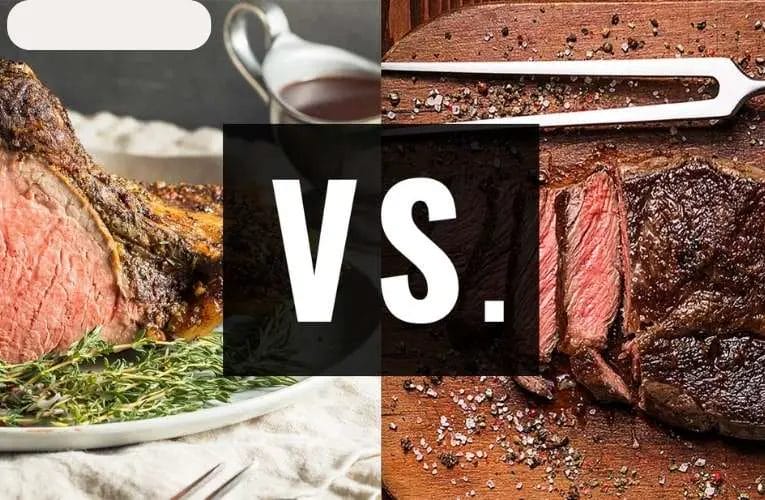
Understanding the Variances: Rib Steak and Ribeye Clarified
When it comes to delicious cuts of beef, the rib steak and ribeye are two popular choices that often cause confusion. While both cuts come from the same primal section of the cow, there are some key differences that set them apart.
In this section, we will delve into the variances between rib steak and ribeye, helping you understand which one suits your taste buds and cooking preferences.
Rib Steak
The rib steak is a flavorful and tender cut that is derived from the rib section of the cow. It is known for its rich marbling, which gives it a melt-in-your-mouth texture and enhances its juicy flavor. The rib steak is typically bone-in, with the bone left intact to add extra flavor during cooking.
This cut is often referred to as the “cowboy steak” or “prime rib on the bone” due to its hearty size and robust flavor.
It is commonly grilled or pan-seared to perfection, allowing the marbling to impart its savory goodness into the meat. The bone contributes to the overall taste, providing additional depth and succulence.
Ribeye
The ribeye, on the other hand, is a boneless cut that is also sourced from the rib section of the cow. It is highly prized for its tenderness and exceptional taste. The ribeye is renowned for its generous marbling, which lends it a buttery texture and makes it incredibly flavorful.
This cut is often considered the epitome of a perfect steak, delivering a luxurious dining experience. It can be prepared in various ways, including grilling, pan-searing, or broiling.
While the absence of the bone may sacrifice some complexity in taste, the ribeye compensates with its tender and succulent meat.
Key Differences
While both the rib steak and ribeye offer exceptional taste and tenderness, there are a few notable differences to consider when choosing between the two:
- Bone: The rib steak is bone-in, whereas the ribeye is boneless. The presence of the bone in the rib steak adds additional flavor during cooking.
- Texture: The rib steak has a slightly denser texture due to the presence of the bone, while the ribeye is generally more tender and buttery in texture.
- Cooking Time: Due to the bone, the rib steak may require slightly longer cooking time than the ribeye to ensure proper doneness.
Ultimately, the choice between rib steak and ribeye boils down to personal preference and cooking style. If you enjoy the added flavor and rustic appeal of a bone-in steak, the rib steak is an excellent choice.
On the other hand, if you prefer a tender and melt-in-your-mouth experience, the boneless ribeye is sure to satisfy your palate.
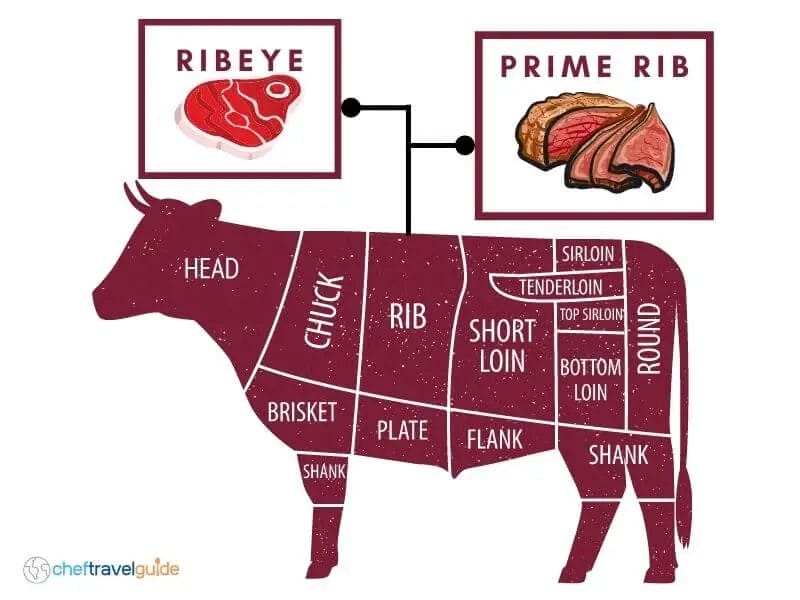
FAQs
Is a rib steak the same as a ribeye?
No, a rib steak is not the same as a ribeye. While both cuts come from the rib section of the beef, a rib steak includes the bone, while a ribeye is a boneless cut, known for its excellent marbling and tenderness.
Conclusion:
In conclusion, while both rib steak and ribeye are cuts of beef that come from the rib section of the cow, they are not exactly the same. Rib steak typically refers to a bone-in cut that includes the entire rib bone, while ribeye is a boneless cut taken from the same area.
Although they have similarities in terms of flavor and tenderness, the bone-in nature of rib steak may affect cooking time and presentation.
Ultimately, whether you prefer the convenience of a boneless ribeye or the added flavor of a bone-in rib steak, both cuts can deliver a delicious and satisfying steak experience.

